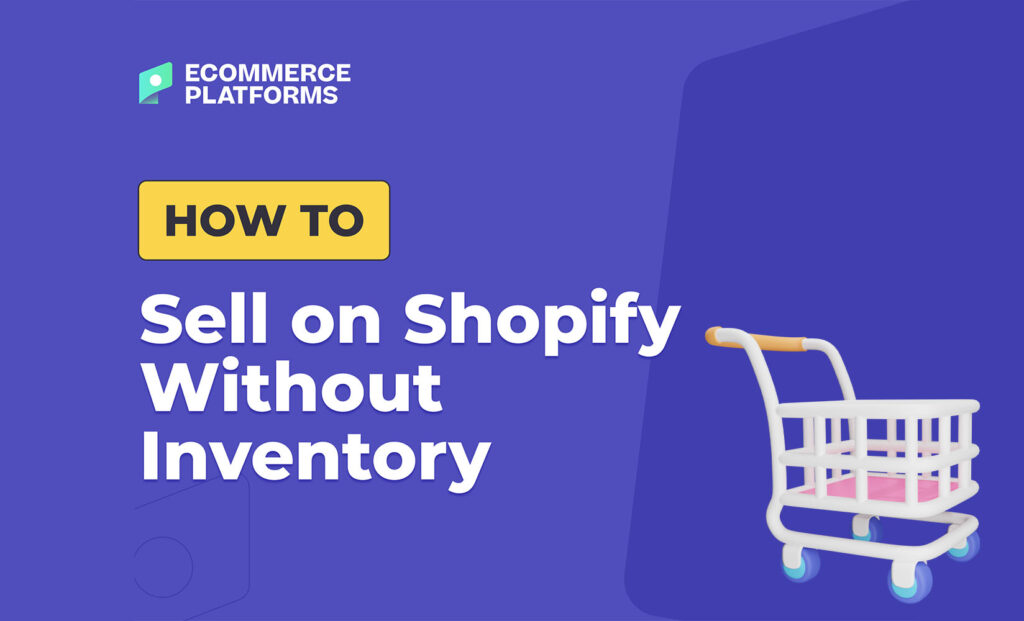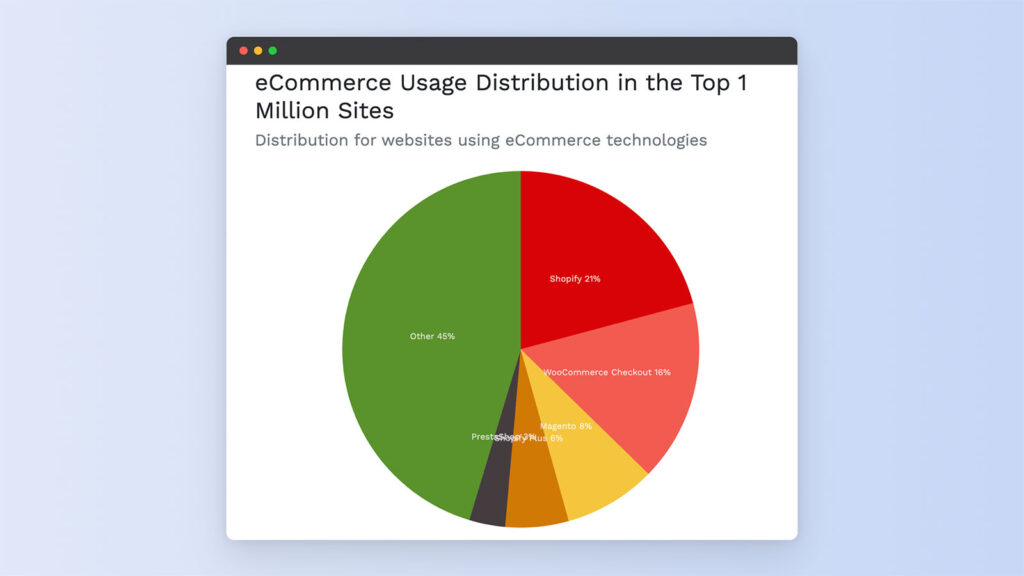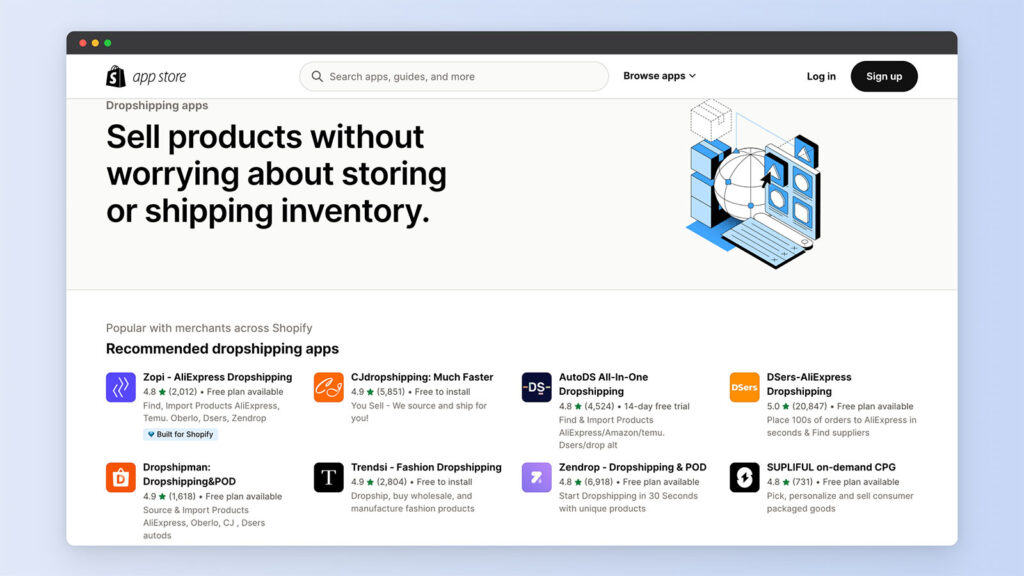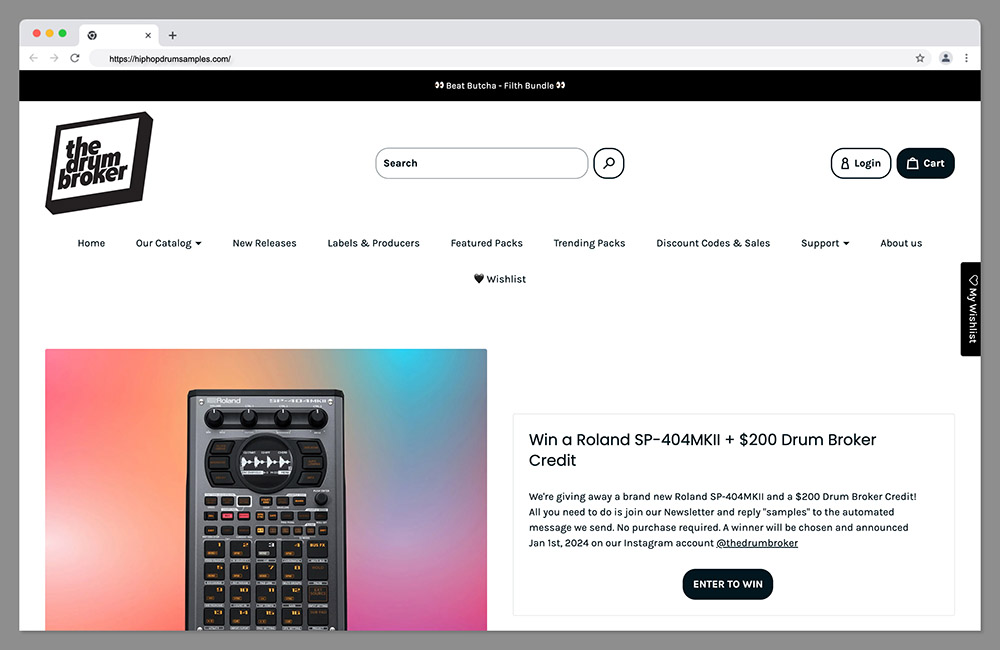
Best Ways to Sell on Shopify Without Inventory
- Dropshipping
- Print on Demand
- Third-Party Fulfillment Centers
- Affiliate Product Sales
- Services, Downloads, or Memberships
- Create your Own Marketplace
Learning how to sell on Shopify without inventory might be simpler than you’d think. To run a successful Shopify store, you need a few things, such as a well-defined business model, a promotional strategy, and plenty of determination.
But inventory isn’t mandatory.
In fact, the evolution of the ecommerce landscape in recent years means virtually anyone can start selling online through a platform like Shopify, with minimal effort.
You can build your entire store without any products at all. Not only does this reduce the amount of work you need to do in your business, but it can reduce your initial expenses, and the amount of risk you’re exposed to, as well.
Today, we’re going to share all of the ways you can sell on Shopify without inventory, discussing the pros and cons of each method.
Table of contents:
6 Ways to Sell on Shopify without Inventory
Shopify powers almost 5 million stores worldwide, but only a fraction of those stores are run by entrepreneurs who source and manage their own inventory. In fact, one of the biggest benefits of using Shopify for your ecommerce business is its incredible flexibility.

A Shopify store can support virtually any kind of business model- including those that don’t involve managing inventory yourself.
Here are just some of the best ways to sell on Shopify without inventory.
1. Dropshipping
Pros 👍
- Low Risk
- Easy for beginners
- Minimal upfront investment
- Access to a range of products
- Easy access to apps on Shopify
Cons 👎
- Not all manufacturers are reliable
- Minimal control over branding and product quality
One of the easiest ways to sell on Shopify without inventory, is with a dropshipping business. Dropshipping is one of the most popular business models in the world, the market is set to reach a value of around $1.921 billion by 2032.
With a dropshipping store, you don’t manufacture, store, or even deliver products to customers. Instead, you partner with dropshipping suppliers, and promote their products through your website. Whenever someone places an order on your store, you pass their details onto your supplier.
They then charge you for the base cost of the goods (and shipping), package the order, and deliver it for you.
The great thing about this business model is it’s easy, and virtually risk-free. You don’t need your own warehouse, inventory or shipping capabilities, and you only pay for products when customers actually purchase them.
Plus, dropshipping with Shopify is extremely simple. All you need to do is choose a dropshipping app to add to your store from the Shopify app marketplace.

There are plenty of options to choose from, such as SaleHoo, AutoDS, and DSers. These apps simplify the dropshipping process by allowing you to easily add products, images and descriptions to product pages in seconds.
Plus, they automatically notify your suppliers for you whenever you make a sale. All you need to do is make sure your supplier (And app) is reliable. Choose a supplier with high-quality products, and ensure items can be quickly delivered to your customers.
If you need extra help, Shopify offers a step-by-step guide to dropshipping as part of its “dropshipping starter kit”.
2. Print on Demand
Pros 👍
- Low Risk
- Beginner friendly business model
- Minimal upfront investment
- Excellent customization options
- Great for experimentation
Cons 👎
- Product quality can vary
- Shipping can take longer than expected
Print on demand (POD) is another popular way to sell on Shopify without inventory. It’s similar to dropshipping, in that you don’t produce, store, or ship products yourself. Instead, you work with a partner that does all of that for you.
Similarly, you only pay for the base cost of products, and shipping, when a customer places an order.
Like dropshipping, getting started with print-on-demand on Shopify is easy, thanks to a wide range of integrations on the app store. You can choose from tools like Printful, Printify, and Gelato.
Once again, you’ll need to make sure you’re choosing a vendor that offers a wide range of products (all excellent quality), and fast delivery times.
Unlike dropshipping however, Print on Demand does involve some extra steps. You’ll need to customize your products with unique designs.
On the one hand, this means you can differentiate yourself from other online business owners. However, you may need to do some extra research into your customers to choose the right design options, or consider working with artists.
The good news is that most POD companies offer simple mockups and design tools that can help you bring your ideas to life.
Plus, since you only pay for products when they’re ordered, there’s no risk involved in experimenting with a wide range of different designs and products.
If you need more advice, you can find our full guide to print-on-demand here.
Further reading 📚
3. Third-Party Fulfillment Centers
Pros 👍
- Simple fulfillment process
- Customized packaging and shipping
- Straightforward inventory management
- Enhanced customer experience
- Potential for reduced shipping costs
Cons 👎
- Requires you to source products
- Some services can be expensive
Working with a third-party fulfillment center is a lot like dropshipping. It allows you to delegate inventory management, packaging, and shipping to another company. This means you don’t actually have to manage your inventory yourself.
However, unlike with dropshipping, you will usually need to source your products yourself, and ship them to your partner. This means either buying products from a wholesale provider, dropshipping company, or manufacturing them yourself.
Working with third-party fulfillment, or third-party logistics (3PL) companies is a lot easier than handling inventory management, warehousing, and shipping in-house. But it’s not quite a simple as working with a dropshipping business.
On the plus side, you do get a lot more control over which products you sell, how they’re packaged and branded, and the delivery experience.
If you want to sell something unique that you can’t find from a dropshipping supplier, or you want a more “customized” experience for customers, third-party fulfillment could be a great option.
Shopify even has its own order fulfillment network you can use, however, it’s worth noting the fulfillment centers are only available to companies in the US.
4. Affiliate Product Sales
Pros 👍
- Easy option for beginners
- No outgoing expenses
- Very little time investment
- Potentially passive revenue source
- Suitable for any niche
Cons 👎
- No guarantee of income
- Can be difficult to find the best affiliate marketing programs
This is quite a unique way to sell on Shopify without inventory, as it doesn’t even require you to have your own store. You can simply create a website with Shopify, and then promote products sold by other brands through your blog and other website pages.
You can also create a “store page” linking to products on other websites, like Amazon. With this method, you completely eliminate the need to source, create, and ship products yourself. There’s no inventory to manage, and no packaging or order management.
All you need to do is promote the right products effectively. Whenever a customer clicks on an affiliate link you use, or uses a code you provide, you’ll earn a commission from the sale.
Notably, the profit margins for affiliate marketing aren’t always going to be as high as those you’d achieve actually selling your own products. However, if you’re just getting started in the world of online sales, this could be a great strategy.
You can even find apps on Shopify that can help you monitor referral links, traffic, and other statistics that could help to boost your sales.
5. Services, Downloads, or Memberships
Pros 👍
- Options for people with any skillset
- No inventory or shipping
- Potential to earn passive income
- Excellent for building your personal brand
- Control over your own time investment
Cons 👎
- May require additional tools
- Demands a commitment to advertising and professional branding
So far, we’ve looked at how to sell on Shopify without inventory with a focus on physical products. However, there’s another option to consider too.
Instead of selling “tangible” items, you can sell digital downloads, memberships, and services.

For instance, you might sell online courses, business consultations, web design services, memberships to communities. Or you can sell digital products, like photos, or even your own Shopify apps and themes. Technically, all of these options don’t require you to hold or manage any inventory.
There are also no shipping or fulfillment requirements to worry about. All you need is your ecommerce store, and the right payment gateways.
You can even set up recurring subscriptions and invoices with Shopify, specifically for service-based businesses. Notably, you will need a few extra things to explore this route, such as a booking or calendar app to manage service distribution, or a Shopify add-on like Easy Digital Downloads.
If you’re creating a membership solution, you might also want to consider using a dedicated app, such as Bold Memberships or Locksmith. You’ll also need to invest heavily in developing your personal brand and promoting your services or solutions.
6. Create your Own Marketplace
Pros 👍
- Ideal for selling without inventory
- Access to a wide customer base
- Opportunities to earn passive income
- Minimal expenses and upfront costs
- Great scalability
Cons 👎
- Requires marketing expertise
- May demand a lot of admin work
You may already know that you can sell products from your Shopify store on other marketplaces like Amazon and Ebay – but did you know you can also design your own marketplace with your Shopify site?
Tools like the Multi Vendor Marketplace app allow you to create an environment where other sellers can promote their products through your website.
You can set your own revenue by charging a commission to every company that uses your marketplace, and you don’t have to manage or create any inventory yourself.
Notably, the process of building a reputable marketplace is a bit more challenging than simply launching a dropshipping store.
You’ll need to focus on strategies like SEO, email marketing, and social media marketing to ensure your site attracts a lot of visitors.
You may also need to help sellers with guides and FAQs. Plus, some sellers may expect you to help with things like customer service.
However, if you can build the right marketing strategies, you can make a significant income from a marketplace.
What About Multi-Level Marketing Strategies?
If you’ve searched for ways to launch your ecommerce startup without inventory before, you might have come across the term “multilevel marketing”. Technically, joining forces with a multilevel marketing company is one way you can build your online store without inventory.
MLM companies sell various items like jewellry and accessories or t-shirts that you can also sell through the Shopify ecommerce platform, without holding inventory.
The MLM company, like a print on demand business or Shopify dropshipping partner holds the inventory themselves.
However, while dropshippers generally only pay for products after they receive an order, you’re required to pay for your MLM products before they sell.
This increases the level of risk you take on as a store owner. Plus, many MLMs often encourage entrepreneurs to purchase more products they can reasonably sell, which means you can end up losing a lot of money.
We don’t recommend this option as a way to sell on Shopify without inventory. Most MLMs have been criticized for their unethical practices, so we’d definitely suggest considering dropshipping or print on demand selling instead.
Bonus: Quick Tips for Selling on Shopify without Inventory
Now we’ve covered some of the best ways to sell on Shopify without inventory, let’s cover a few quick tips to boost your chances of success:
- Conduct thorough research: Take the time to review your competitors, learn about your audience, and check out trends before you dive into building your store. Make sure there’s plenty of potential to make a profit with any method you choose, and get your pricing right.
- Choose partners carefully: Make sure you work with a reputable partner. If you’re dropshipping, don’t just choose AliExpress because it’s cheap. Make sure you’re going to get great customer support, high-quality products and fast shipping.
- Invest in marketing: Commit to search engine optimization for your store and product descriptions. Consider using advanced marketing methods on social media, and collect email addresses for an email marketing campaign.
- Offer a great experience: Optimize the experience for your customers. Accept various different payment methods. Ensure your site loads quickly, and make it easy to navigate your store and make purchases with straightforward, responsive templates.
- Consider selling on multiple channels: Expand beyond sales on your Shopify store by integrating with marketplaces like Amazon and Ebay, or selling across social media. You can find tutorial guides on how to do this on the Shopify website.
Remember, while there are plenty of ways to sell on Shopify without inventory, it’s still up to you to ensure your business is a success.
Commit to putting in the effort to build your store and online presence, and you’ll be able to run a successful business, even without inventory.




Comments 0 Responses